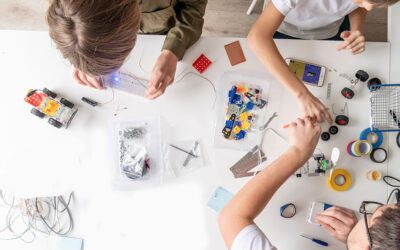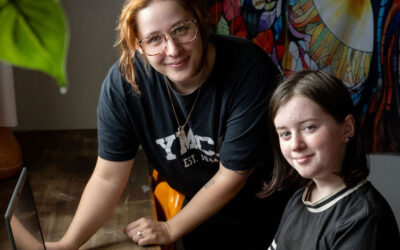For more than 120,000 years, Aboriginal and Torres Strait Islander people have sustainably lived with the land. Whether your family has been in Australia for five years, five decades or across multiple generations, what unites us is that we are standing on Aboriginal or Torres Strait Islander Land.
How First Nations Australians continue to value and care for Country is an important part of our shared history. Emeliah Kolinac, Innovations Manager at Sanctuary Early Learning Adventure, believes that respect begins at a grass roots age.
“By building awareness of the impact humans have on the environment from an early age, children all learn how to play a role in positively living with, rather than imposing on, the Land,” Emeliah says.
By appropriately drawing on local Aboriginal and Torres Strait Islander perspectives, this holistic early learning centre embeds the importance of caring for Country first-hand. It also does so in culturally appropriate and meaningful ways.
“It’s a cornerstone of our curriculum that our children respectfully learn about Aboriginal and Torres Strait Islander perspectives, philosophies and practices about caring for Country,” Emeliah says. “As well as physically demonstrating respect for the skies, waterways, and land on which we live and learn.”
She says it’s important to embed First Nations’ perspectives in early learning to create an anti-bias, anti-racist and inclusive curriculum.
“It’s about celebrating culture, historical acceptance, race relations and reconciliation.”
Connecting children to the Land
Emeliah explains there are many ways to embed these experiences in a play-based way that connects with pre-schoolers.
“Create a bush tucker garden for children to look after native plants,” she says. “these plants are then used in play, cooking experiences and paddock to plate lunchtime meals.”
She says creating community links with local catchment care groups and environmental organisations is also valuable. This can create great excursions for the older students or interesting workshops for the little ones.
“Invite Aboriginal Elders to visit the centre to share cultural experiences and traditions with children,” Emeliah says. “Not only will this enhance [children’s] learning and understanding, it will also develop an awareness of the historical and cultural significance of the land on which the early learning centre stands.”
She says Sanctuary Early Learning Adventure is guiding little ones to regularly reflect on what ‘home’ or ‘place’ means. Also, the centre encourages children to consider why it’s important to connect with and care for Country.
“Alongside this reflection, they develop an understanding of the concept of Country according to Aboriginal and Torres Strait Islander perspectives,” Emeliah says.
The centres have published Reconciliation Action Plans and have Sustainability Action Plans that both adapt and grow with children, families, educators and the wider communities input. Reconciliation Action Plans and a Sustainability Action Plan. She says both adapt and grow with children, family, educator and the wider community’s input.
Emeliah believes embedding indigenous culture in the classroom requires a multifaceted approach.
“Use children’s interests as a vehicle for learning and to create culturally inclusive play spaces,” she says. “Incorporate culture across multiple play spaces instead of creating cultural corners.”
She says embedding the understanding of Aboriginal and Torres Strait Islander ways of living and thinking provides a deeper connection to the world around us.
“It balances perspectives and brings forward the sustainable way of living and learning.”
Sanctuary Early Learning Adventure has centres in Ashmore, Maudsland and Mermaid Waters. Visit sanctuarylearning.com.au for more information or call 1300 00 PLAY (1300 007 529).
You may also like…
Six ways to help baby transition from breast to bottle
What are authentic resources, and how are they beneficial in early learning?
The Gold Coast early learning centre with innovative gardening program


